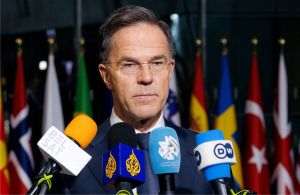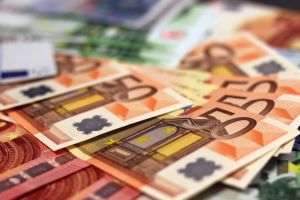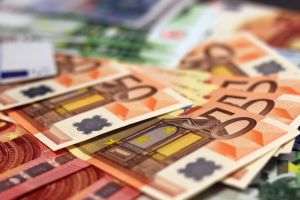
Some would say that America's fate is sealed through the coming of a narcissist in the White House. On the other hand, Donald Trump's narcissism, as a president, is still an unknown, whereas Barack Obama's narcissism has been proven countless times, especially in his speeches, where "I" was often times the sole topic.
The only "performance" of the community organizer from Chicago remains that of being the first president of color in the history in the history of the United States. If that wasn't the case, Donald Trump, who won the election despite the obstacles raised in his path by his own party, wouldn't have become president.
Now Trump has taken over the "wheel" from Obama in a "car" that has just partially gone over the cliff, as shown in a cartoon published in the American press, inspired from the ending of the movie "Thelma and Louise".
His task is more than Herculean, because it follows a Nobel peace prize winner who "led" America through its longest period of war in its history and who has promoted disastrous economic policies, whose only goal was to bail-out Wall Street.
One journalist from the British daily The Guardian writes that "Obama has handed over a surveillance state and a war machine to a maniac". Seriously? Since when is the "maniac" the one who takes over a disastrous legacy, rather than the one who carefully "oversaw" its construction?
Under these circumstances, Donald Trump doesn't have many options. The only way to keep the US' superpower status remains the rebuilding of the economy on sustainable bases, by returning to the principles of economic freedom, especially amid the massive withdrawal of funds invested in American government bonds.
The latest data from the US Treasury shows that Japan and China are selling large volumes of US bonds, a phenomenon which exacerbates the trend of rising borrowing costs.
In the first three years of the Clinton administration, the yield of 10-year government bonds increased almost 3 percentage points, up to 8%, between October 1993 and November 1994, amid concerns over the level of government spending. Net annual interest expenses of the federal budget amounted to approximately 200 billion dollars at the time.
The measures for the reduction of the budget deficit reassured the markets, and the yield of 10-year bonds dropped to about 4% in 1998.
The restrictions placed by the market on the economic stimulus plans have made James Carville, the political advisor to Bill Clinton, to say that "if I were to be reincarnated, I would like to come back in the form of the government bonds market".
Since then, things have fundamentally changed. The latest forecast of the Congressional Budget Office, in the second semester of 2016, shows a frightening increase in net interest budget spending, to about 800 billion dollars in 2026.
Much more worrisome is the fact that the CBO estimate starts from hypotheses that cannot really be considered reasonable, more like phantasmagoric.
For example, it is expected that the policy rate will be 1.1% in 2017, 2.9% in 2020 and will stay at 3.1% starting in 2022 until 2026.
But is that compatible with the 2% inflation target of the central bank? Far from it. According to the Bloomberg model, concerning the monetary policy resulting from applying the Taylor rule, to an actual rate of inflation of 2.1% starting in December 2016, should be matched with an intervention rate of 4.45%.
The CBO prognosis for the inflation until 2026 shows an annual price growth rate 2% in the next 10 years, as the number of individuals aged over 65 will increase from 50 million in 2017, to 66.2 million in 2026.
But what about the significant decrease of unemployment? Just a statistical illusion, which has benefited Donald Trump.
John Crudele recently presented, in the New York Post, the conclusions of a study made by professors from Harvard and Princeton, "The Rise and Nature of Alternative Work Arrangements in the United States 1995-2015", which states that 94% of the rise in the number of jobs was the result of "alternative hiring arrangements", meaning temporary jobs, part time or contract-based. Just 0.4% of the number of jobs "created" by the Obama administration, the equivalent of approximately 500,000, have been "classic employment agreements", meaning full time jobs, Crudele further writes.
However, the New York Post journalist grants Obama some extenuating circumstances, because "he couldn't have done anything else", as "the US economy was dysfunctional, following decades of flawed monetary and fiscal policies".
Will anybody take care of that context when assessing Donald Trump's performance? Not at all.
The signals sent by the Federal Reserve show that the US Central Bank has all "all of a sudden" become concerned over the postponement of the hike of the policy rate, according to Financial Times. Janet Yellen, the chairman of the Fed, recently stated that "postponing the process to raise the interest rates could produce an unpleasant surprise", without saying a word about the "relaxed" position the institution she leads had before the election results were announced.
Aside from these statements that are threatening to the new administration in Washington, the Fed has additional "ammo" in its portfolio. According to data from the Federal Reserve Bank of New York, government bonds from the portfolio of the central bank in New York with a face value of approximately 194 billion dollars will reach maturity in 2017. In 2018, the amount of bonds that reach maturity is almost 420 billion.
Will these bonds be replaced by the new securities issued by the US Treasury, as Federal Reserve officials are saying with increased frequency that the time has come for the balance sheet of the central bank to shrink, after it reached approximately 4.5 trillion dollars following the quantitative easing programs?
Regardless of the answer to that question, the Trump administration is still facing an almost impassable wall. Overcoming it, by going back to the principles which "America the Beautiful" was built on, would be a historic performance, which would outshine all of Hercules' labors.




























































